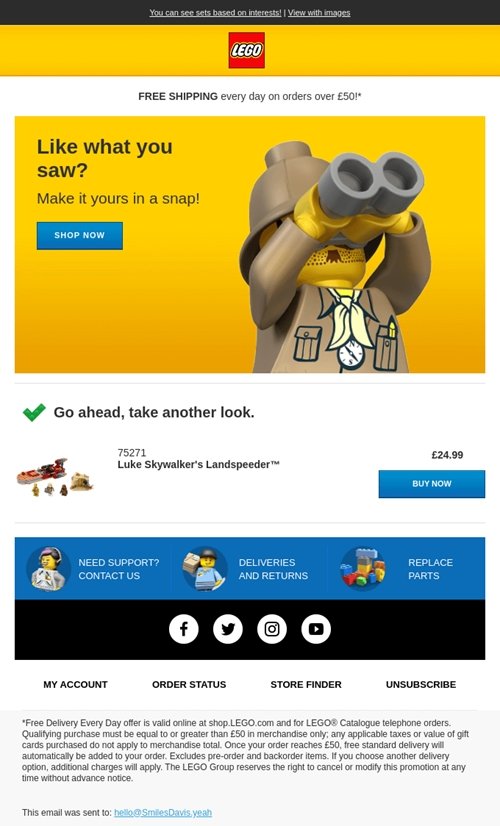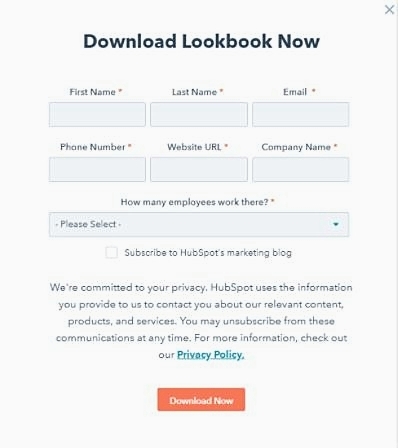Triggered email, defined as an email deployed when an individual takes an action or meets a condition defined by the sender, has been around since the early 2000s.
Marketers should not only be using this strategy but also considering segmenting their audiences to provide an engagement-triggered experience for each user.
Marketers who use segmented campaigns note as much as a 760% increase in revenue (Campaign Monitor, 2019). That's a huge opportunity to create an even more effective triggered email program—one highly focused on personalization and micro-segmentation.
For email, personalization is a targeting method in which an email appears to have been created for a single subscriber. It is widely accepted that audiences prefer personalized messages, and personalization has been shown to boost open rates and engagement.
Personalization techniques include
- Adding a subscriber's name to the subject line or message body
- Creating user segments based on prior purchases or demographics
- Using a subscriber's location to create email content for their region
Micro-Segmentation
Micro-segmentation is a relatively new concept that email marketers are beginning to implement for their programs.
Beyond traditional segments such as active, loyal, unengaged, etc., micro-segments take complex data and demographic background to form extremely nuanced groups and improve the performance of your email programs. Behavioral data may include engagement with email, actions taken on the site or social media, and more. Demographics could include age, location, and relationship status.
Regarding those concepts, the more data collected from your subscribers, the better. Many senders collect only email addresses from their subscribers or leads to create less of a barrier to conversion. However, a growing number of companies are adopting a different strategy.
They have been able to identify opportunities to progressively profile their customers and build more robust data profiles, leading to better opportunities for segmentation and conversion. They can do so because they provide customers with a clear picture of why providing more information is beneficial to them and will lead to a better subscriber experience.
Examples
B2C
A common strategy across B2C brands, which have historically struggled with a longer opt-in process, is to provide a more personalized approach to their audience from the beginning. That allows for better product recommendations and typically involves some sort of survey or form-fill promising to provide a tailored experience for their subscribers.
For example, through a 13-question in-depth quiz, HUM Nutrition starts its subscriber relationships on an incredibly detailed level.
HUM capitalizes on this willingness by providing a personalized journey for each subscriber from the very start. Their follow-up email takes users to a personalized profile, complete with verified reviews from actual customers, and access to a nutritionist. This complex triggered program sets HUM up for converting subscribers from the very first email, complete with a coupon to get their users started. This is a fantastic example of how brands can capitalize on the personalization momentum in their triggered emails.
Stitch Fix takes a simple approach with a three-question quiz, which helps identify each subscriber's personal style.
After users submit their email address, the quiz continues. This way might be a little more palatable for brands who are afraid of giving their subscribers too many chances to abandon a quiz before submitting their email address.
B2B
For B2B senders, the approach differs. In the past, gated forms have provided the opportunity for companies to capture more information from their subscribers in exchange for more or better premiums. However, if a company asks for too much information, its conversion rates typically drop. HubSpot balances those issues within its resource center.
It does a great job of identifying which pieces of content on its site warrant gated fields. The more information HubSpot is offering, the more information users need to provide so they gain access. Much of the content on the site requires only an email address, but HubSpot provides the opportunity to progressively profile its subscribers by asking for different information for subsequent assets.
Transactional email
For personalization, transactional email can draw from previous purchases to provide more relevant email experiences. A good example of personalized transactional emails comes from Lego:

This email is personalized to the shopper's cart and encourages the shopper to return to finalize the purchase. The template has a branded look and feel, but the dynamic elements (abandoned cart items) are still tailored.
Many brands offer a coupon for individuals who abandon their carts as an incentive to return. While this historically has been an effective strategy, many shoppers have become wise to the tactic. If your brand is able to put together a multitouch abandoned cart email, it would be best to save a coupon or discount offer until the final touch in the series to avoid shoppers' strategically abandoning carts to save money. Sneaky.
You might be wondering how brands capture some of data after the initial subscription process without the use of a detailed quiz. Progressive profiling and preference centers offer the option to add the element of personalization to your triggered email program. A great example comes from Prose:

This email offers subscribers several opportunities to update their information, yet it includes personalized elements the brand has already collected about the subscriber (such as location).
Important to Keep in Mind
With all of the different ways that personalization can be applied to your program, there are some key items to keep in mind:
- Privacy policies: As you collect data from your subscribers, it is important you remain compliant with any relevant data policies, such as CAN-SPAM, CASL, and GDPR. Each year, more policies are put in place, so regularly audit your email program and data collection points to ensure they are compliant.
- Regular review of email programs: Even the best automated journey needs to be updated from time to time, so regularly review your automated journeys to ensure your information is up to date and relevant for your subscribers. In addition, review your templates, subject lines, and other key elements to ensure they are still functioning at a high level.
- Attention to current events: The world is unpredictable, which means you need to be able to adjust your program instantly. The ability to halt or alter your triggered program is crucial.
- Reviewing the data: Keeping an eye on the trends in your data is critical. Inbox placement rates, open rates, and engagement signals are important in understanding how well your triggered email programs are performing.
* * *
Hopefully, you can take these various tips and tactics and bake them into your triggered email campaigns to create more engaging, personal emails for better engagement.







